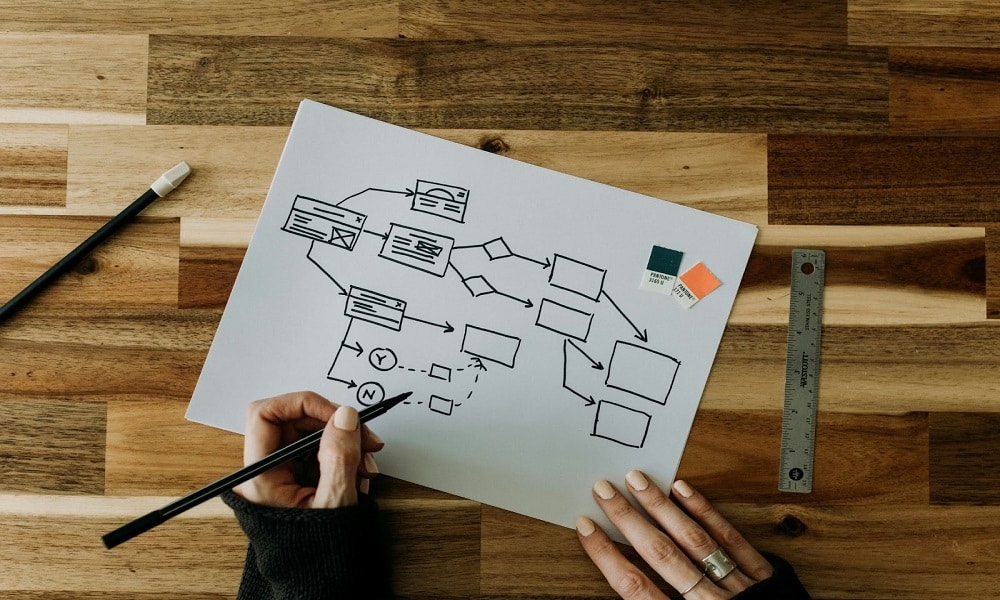Collaboration doesn’t always come easy, especially when teams face tight deadlines or complex projects. Miscommunication can quickly derail progress, leaving everyone frustrated. That’s where visual collaboration becomes a difference-maker for boosting team efficiency.
By turning ideas into shared visuals, you make processes more understandable, encourage active engagement, and aligned to your goals. From simplifying communication to tracking progress transparently, visual tools help streamline how people work together.
Let’s dive into how embracing these strategies can transform the way your team collaborates and solves problems with clarity, creativity, and confidence every step of the way.
5 Ways to Unlock Team Efficiency Through Visual Collaboration
When objectives aren’t crystal clear, teams often struggle with misaligned priorities and wasted efforts. Using shared visuals can make a huge difference in bringing clarity to your goals.
By visually mapping out ideas or project steps, your team can better understand the big picture and their role within it. For example, tools like Miro’s logic model templates make it easy to outline workflows, break down complex plans, and ensure everyone is on the same track.
This not only saves time but also fosters a sense of collaboration and purpose. With shared visuals, you empower your team to move forward confidently toward achieving common targets.
2. Boost Engagement with Interactive Diagrams
Keeping your team engaged during collaboration can be challenging, especially when ideas get lost in long discussions. Interactive diagrams are a game-changer, allowing everyone to visualize concepts and contribute their thoughts in real time.
Whether it’s mind maps, flowcharts, or brainstorming boards, these tools invite participation and make complex ideas easier to digest. When you’re able to see connections visually, your team stays focused and energized throughout the process.
Interactive diagrams also foster a sense of ownership as everyone’s input becomes part of the larger picture. This active engagement leads to more innovative solutions and keeps productivity flowing seamlessly during any project.
3. Streamline Communication Across Teams
Effective communication is the backbone of any successful team. When working across departments or time zones, it’s easy for details to get lost in emails or lengthy text updates.
Visual collaboration tools help bridge that gap by presenting information in a way that’s simple and universally understood. Diagrams, timelines, and workflows make complex ideas accessible at a glance, ensuring everyone stays aligned.
If you share these visuals in real-time, you reduce back-and-forth clarification and keep projects moving smoothly. This type of streamlined communication not only saves time but also minimizes confusion, fostering stronger connections and better results for your team as a whole.
4. Enhance Problem Solving through Visualization
Visualizing problems is a powerful way to break them down and uncover solutions you might miss with traditional approaches. When you map out challenges visually, whether through diagrams, flowcharts, or user journey maps, patterns, and root causes become much clearer.
This method helps your team tackle issues collaboratively by encouraging diverse perspectives in an organized way. Instead of relying on lengthy discussions or abstract data, visualization transforms the problem solving process into something tangible and actionable.
It also simplifies complex situations, making it easier to pinpoint priorities. By working together on visualized problems, your team can brainstorm more effectively.
5. Track Progress Visually for Transparency
Tracking progress visually keeps everyone informed and accountable without constant status check-ins. Using tools like Kanban boards, Gantt charts, or dashboards allows teams to see where tasks stand and what’s next. This transparency prevents bottlenecks by highlighting delays or roadblocks early, so adjustments can happen quickly.
Visual progress tracking also fosters a shared sense of responsibility, giving each team member clarity on their role and contributions. It minimizes misunderstandings about deadlines and priorities while keeping motivation high as achievements become clearly visible.
When you make the workflow transparent and accessible to everyone, your team stays organized, aligned, and focused on reaching your collective goals efficiently.
This is How to Improve Team Efficiency With Visual Collaboration
Visual collaboration has the power to transform how your team works, creating stronger connections, clearer communication, and more productive workflows.
If you integrate these strategies into your processes, you can enhance efficiency while fostering creativity and teamwork. Now’s the perfect time to take action – start exploring tools or techniques that bring your ideas to life visually. Encourage your team to collaborate in new ways that make everyone feel engaged and aligned toward shared goals.


